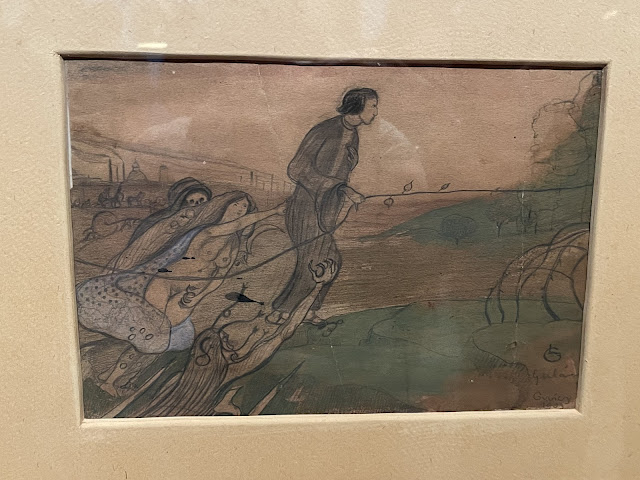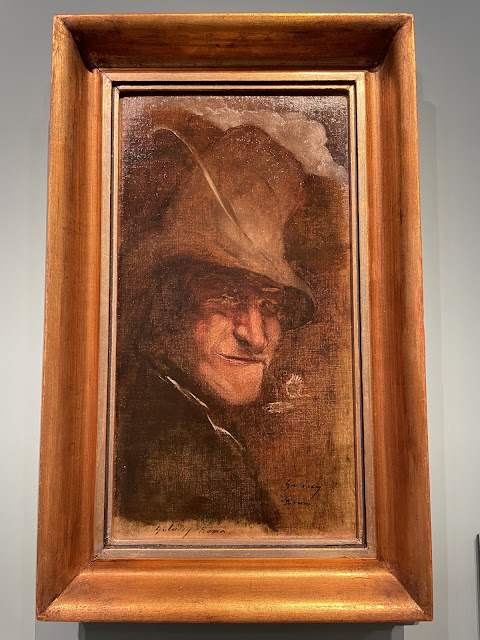‘I live in this world half dreaming’: Hungarian Artist Lajos Gulácsy
Travels are
all about discovery, and it’s appreciated when accident rather than design
leads you to something unexpectedly interesting. When I visited the Hungarian
National Gallery in Budapest, serendipity led me to a temporary exhibition of
the works of Lajos Gulácsy, a native of Pest and an artist of whom I had never
previously heard.
Born in
1882, Gulácsy was still at secondary school when some of his artworks were
exhibited in one of Budapest’s galleries. He was influenced by the Pre-Raphaelites
and spent much of his time working in Italy, contexts that can both be seen
reflected in his artwork. Sadly, he suffered a mental breakdown at the outbreak
of the First World War, and he was institutionalised from 1919 until his death
in 1932. Gulácsy wrote, ‘I live in this world half dreaming. With one eye, I
stare into the illusion of sweet, mendacious phantasms; my other eye is always
open to reality’. His work can be divided into depictions of the world of his
imagination and portrayals of everyday life and nature.
What I found
most fascinating to read about at the exhibition was his creation, circa 1902,
of his own fairyland, Na’Conxypan, which featured in short stories he wrote as
well as in his paintings. Na’Conxypan was supposedly a lunar city, peopled with
characters such as the Dwarf of Mossland, Hokkehokke the Wonderhaired, and the
Crescent Moon Girl. The stories apparently feature intriguing and inventive
ideas, like creating ‘sound crystals’ that turn sounds into physical things. Such
was the hold of his fantasy world on his imagination that Gulácsy would refer
to himself as the Prince of Na’Conxypan. He painted many self-portraits
featuring himself in different guises, including a Renaissance monk, a
sorcerer, and a rococo fop, amongst others. So, who and what was he, and did he
really know himself? He asserted that ‘my paintings convey the entirety of my
being, with all its blemishes and worth, its enigmatic spirit and physical
body’. However, were the paintings representations of what he was or what he
wanted to be? Perhaps the two were ultimately indivisible. Art shows us what is
really there and what is not—the world as it is and the way we would like it to
be. But where do we draw the line between these states? And who can be a truly reliable
observer rather than simply an interpreter? Perception is a tricky thing.
I share here some of the paintings and drawings I saw on my visit to the exhibition (with titles and years of production where I was able to locate the information). If you can find a photograph of Gulacsy, you’ll see where he has inserted his own image in his creations. I’ve written before about liminality, and Gulácsy seems, by his own admission, to have been suspended between worlds, a position reflected in the ethereal nature of his artworks, whatever the subject matter. Whilst he painted his own visions, Gulácsy also showed us ours, since life, for most of us, consists of the space between the retina and the mind’s eye.




































Comments
Post a Comment